Bishop Auckland to Willington
Faced with the prospect of an empty Wednesday afternoon, we scoffed a quick dinner and shirked our chores and responsibilities for the rolling fields of west County Durham and the endless charms of the Weardale Way. We left off just north of Bishop Auckland, just past the massive Newton Cap Viaduct.
Not wishing to walk a loop we parked the car in Willington and took the 108 bus down to Toronto (not that one). The 108's a local bus and doesn't have a card reader, so bring cash for the fare. The stop is just past the Bishop's Lodge pub on the A689.
We set off down the hill for a bit, before cutting off onto a permissive footpath through some fields, crossing the Bishop Auckland Railway Path and meeting up with the Weardale Way wedged between the bottom of a grassy slope and the Wear.
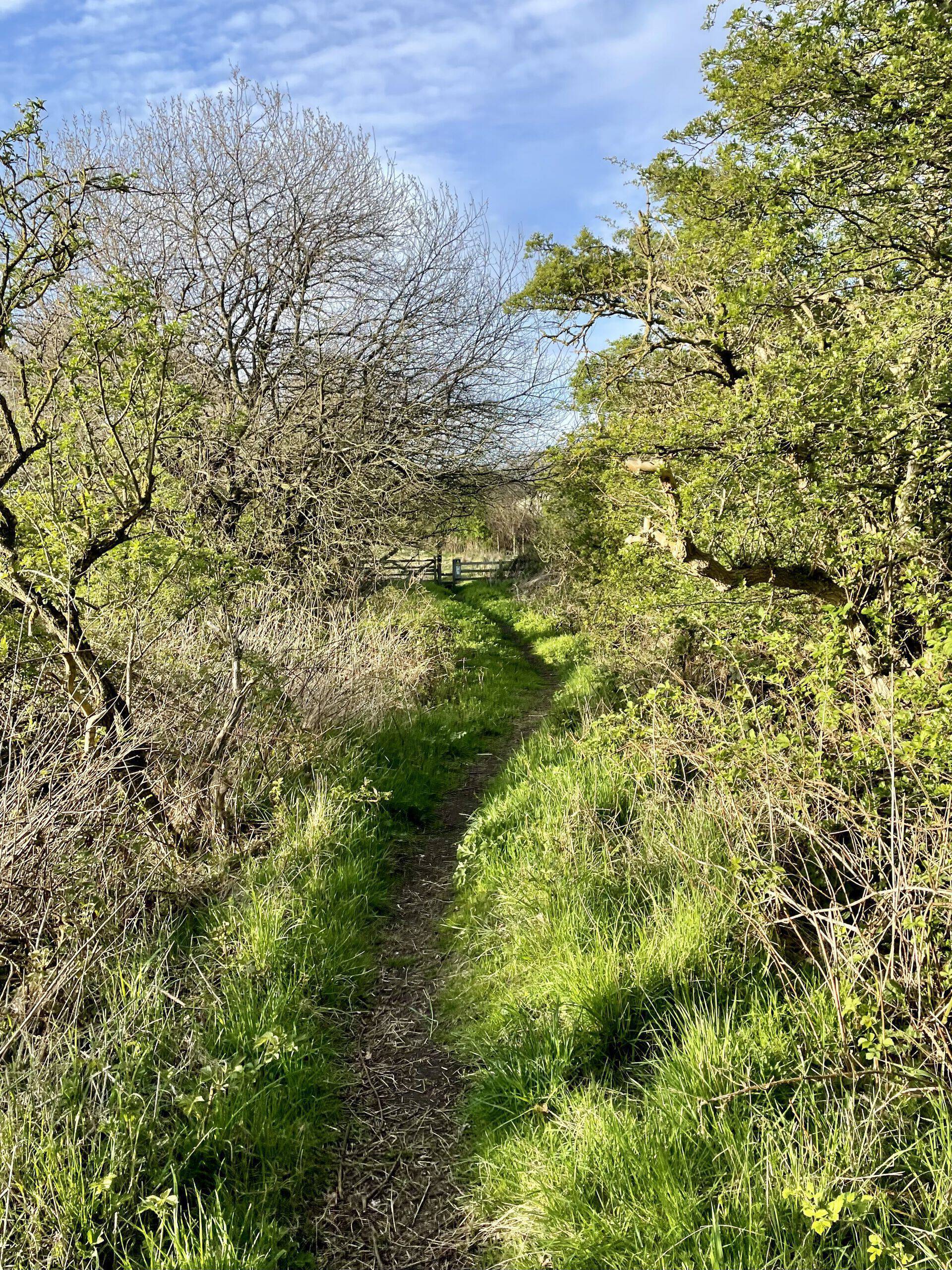
Before too long we passed the point where Dere Street crossed over the Wear, coming down the hill from the Roman fort at Binchester (Vinovia). I'm sorry to say that much of the Roman road on the far side of the river is now covered with a sewage works, but on our side of the Wear, Dere Street continues back up the hill—at least a little ways.
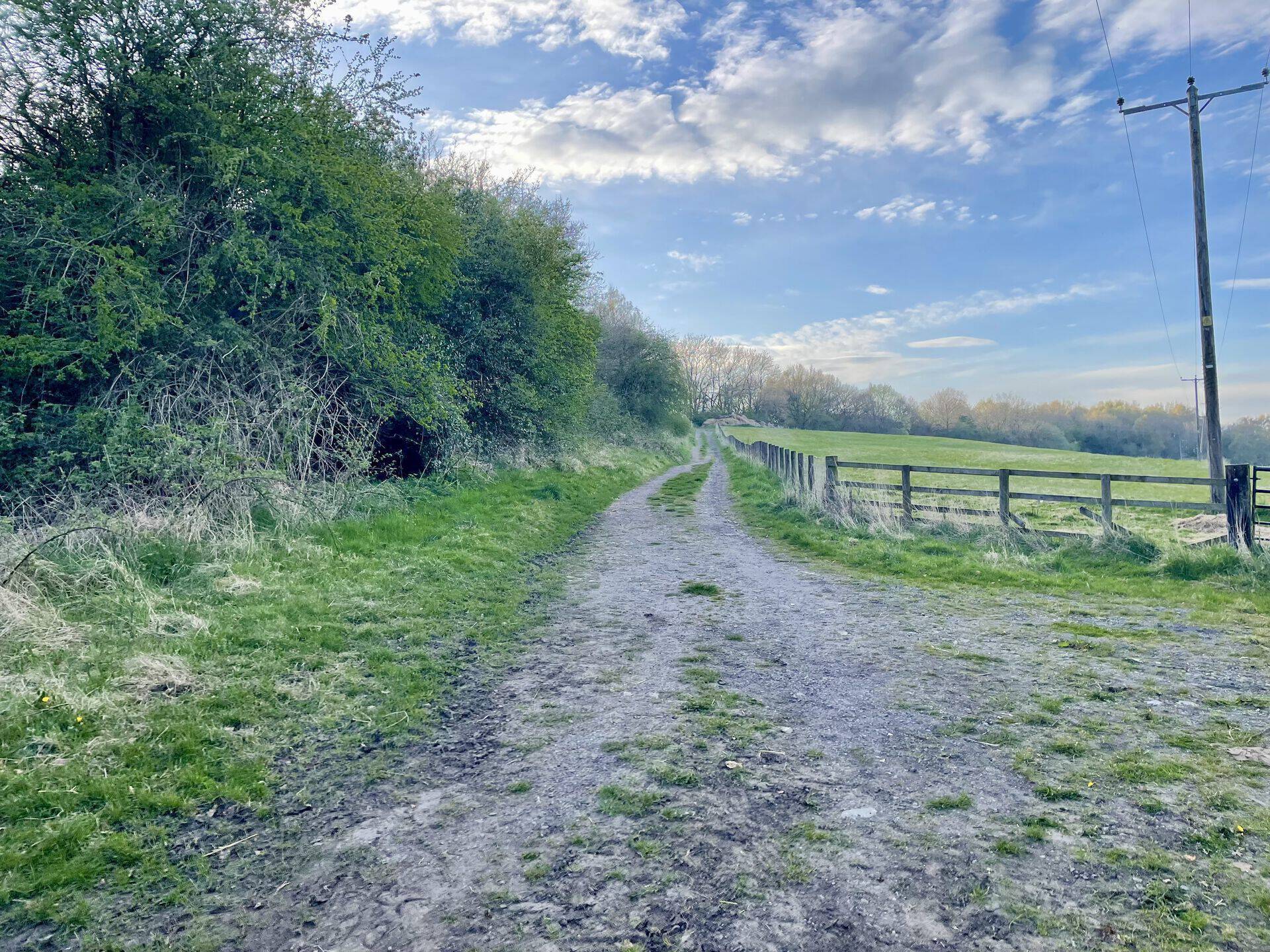
We cut to the right, close along the Wear, and made our way up towards Farnley, a posh-looking farm with a (probably literal) ton of horses. The way sort of meanders up around the side of the hill and then follows a gravel road out towards Hunwick. Near where the gravel track becomes Station Road, we found the erstwhile New Monkey pub (The Station Hotel, in a former life), evidently erected to serve the colliery on the north side of the road. There was railway station here as well, closed back in the 1960s. We stopped for a moment to snap a picture; some cows in the nearby field looked on with curiosity.
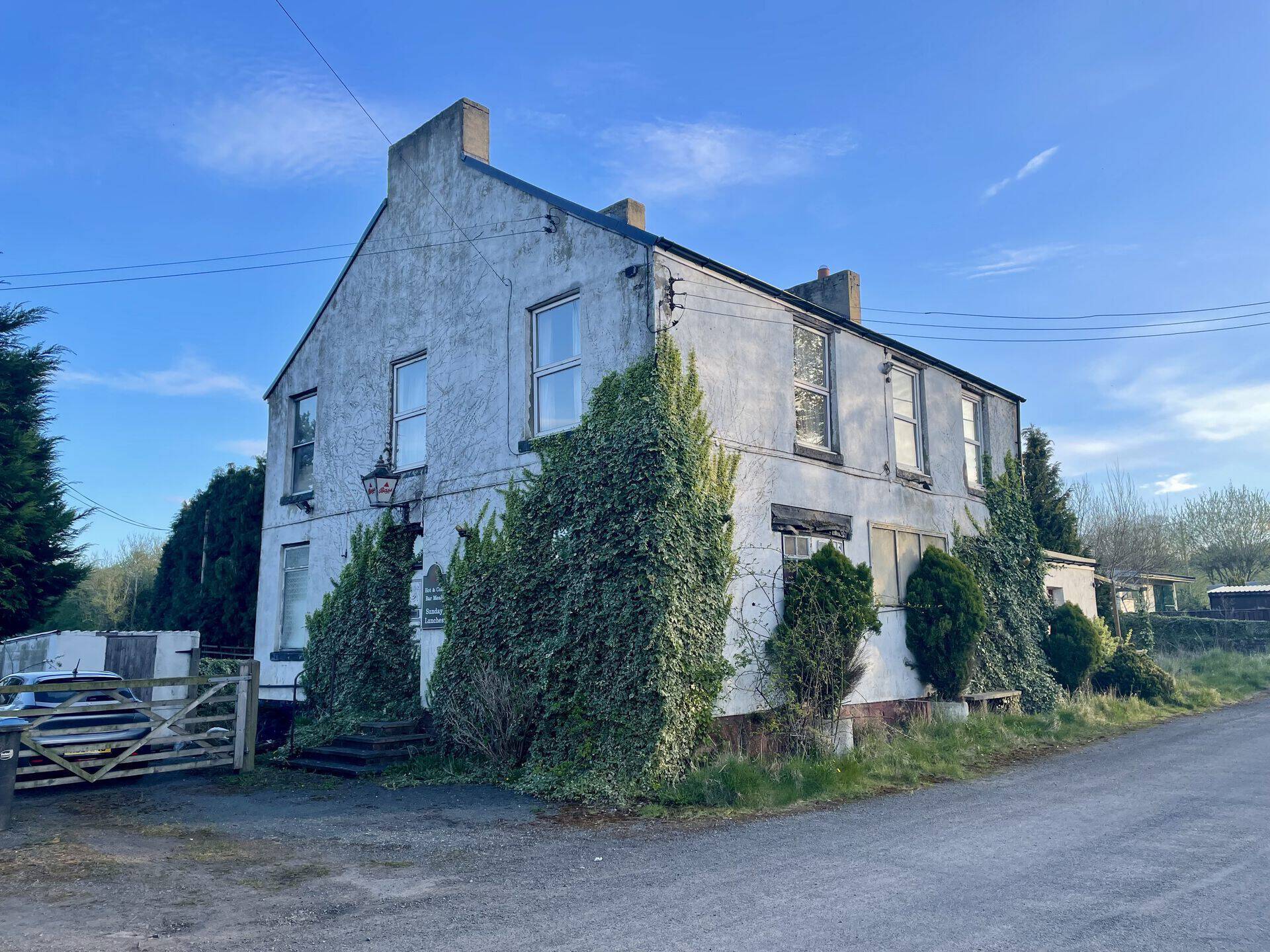
The Way bears on through those same cows' field, so we pressed on amongst them, hugging the treeline as we made our way further north. From here the trail drops down into Hunwick Dene through a narrow forest; the descent to the Wear was steeply thrilling. There was even a bit of a ladder, made from half a stile, to navigate at one point.
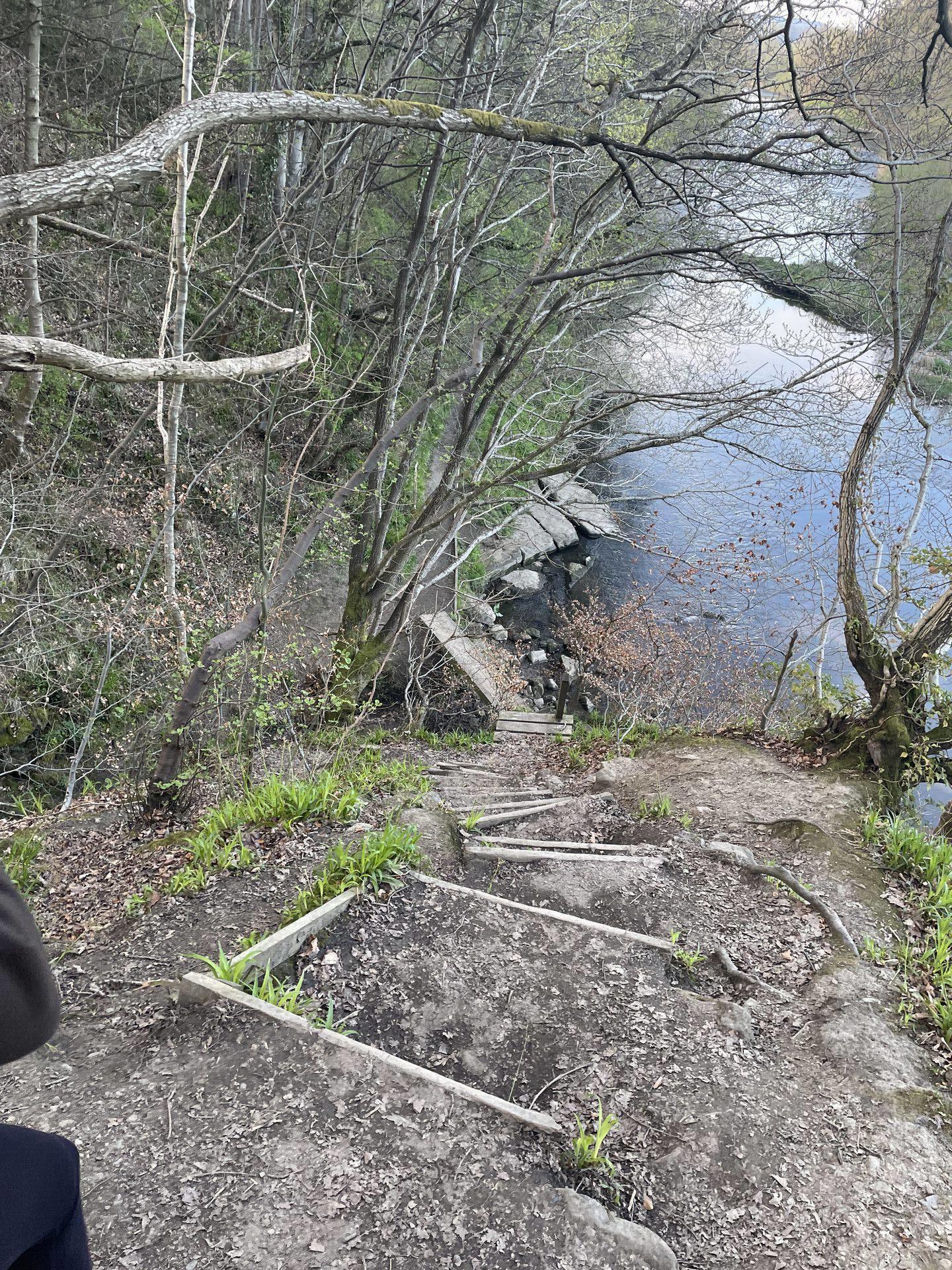
Onward from here were more scenes typical of this part of the Way: high grasses, hawthorn thickets, far-off farm animal sounds. Quiet, too—the floodplains picturesque in the setting sun. The regular sounds of cars on the roads above us didn't spoil the mood much.
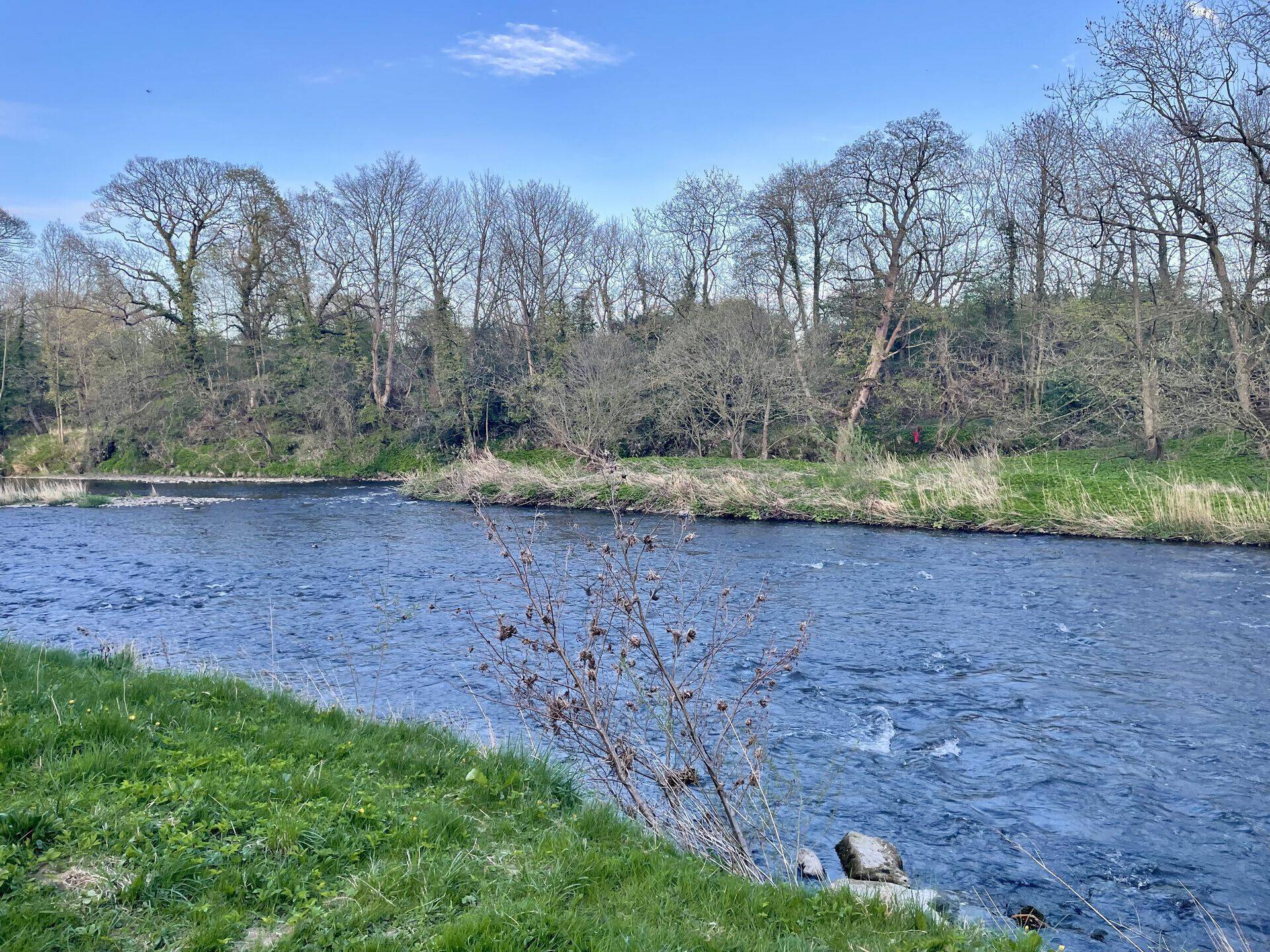
Eventually we arrived at the bottom of the bank below Willington, and before long we arrived at Jubilee Park, constructed for Victoria's Golden Jubilee in 1887. The current Jubilee Bridge dates to 1990; before that, an iron bridge spanned the Wear here.
Back up the steep road into Willington and back to the Volvo—then back home.
Next
April 2022 was a busy one: plenty done online and plenty done outdoors. Now if they could all be quite this way, I'd be well pleased.
Previous
Linear is a beautiful app with a thoughtfully designed and powerful interface that I just can't find a use for.